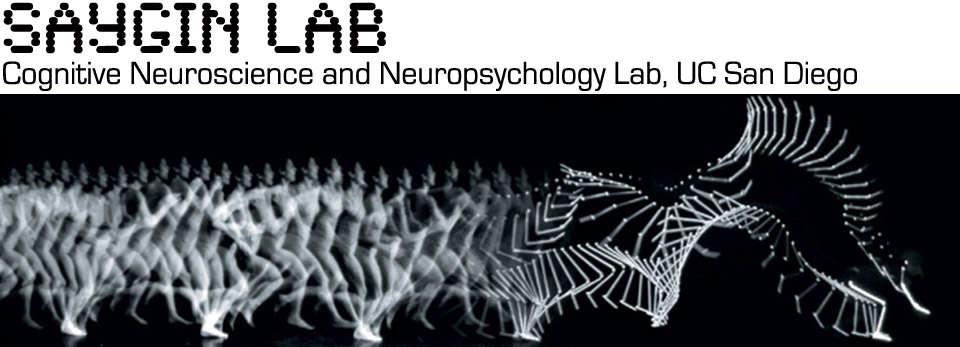Multiple People Tracking?
Biological motion processing is fundamental to many important tasks, from hunting prey to social interaction. Due to the evolutionary importance of the domain, does biological motion receive preferential perceptual and neural processing? If so, at which processing levels do we see evidence for special treatment? Researching these questions can not only improve our understanding of biological motion perception, but can also shed light onto the nature of computations at different levels visual processing.
Earlier this year, we published a paper that used the Multiple Object Tracking (MOT) paradigm from vision science along with point-light biological motion stimuli to study whether attentional selection might be specialized for tracking biological targets.

“Imagine a primitive hunting party on the savannah stalking four weak gazelle amongst a larger herd” (Tombu & Seiffert, 2008). Or consider playing basketball, trying to remain mindful of the whereabouts of your teammates. Or trying to keep track of your friends at the July sales at Selfridges (shoes on sale!) These examples show the tracking of other animate entities is both commonplace and important. We wondered if this ecological importance would be reflected in performance in the MOT paradigm. We hypothesized people would track biological motion more effectively than inverted or scrambled control stimuli.
Videos depicting the trials for the biological motion experiment. Subjects tracked the targets coloured in red at the start. Video speed may not be exactly the same as the experimental trials.
And this was indeed what we found. But is this advantage due to the biologicalness of the targets per se? Or could it be because biological motion is a structured, coherent object, whereas the control stimuli are perceived as swirling groups of dots? We added a non-biological stimulus type that also has a canonical orientation in the next experiment: Subjects tracked the letter ‘R’, also composed of point-lights, presented upright, inverted or scrambled. Although inversion did not affect MOT performance for tracking letters, scrambling led to reduced tracking performance. Thus overall, while there may be some special role for biological motion (due to the inversion effect) in MOT, it appears structured objects, regardless of their biologicalness, are tracked better than unstructured ones.
Video for the letter condition. Subjects tracked the targets coloured in red at the start. Video speed may not be exactly the same as the experimental trials.
We next wondered what other naturalistic aspects of biological stimuli MOT might be sensitive to. Biological objects typically move in a manner that is consistent with the action they are performing. For example, if someone is facing leftward, they will in general be walking in that direction as well. We tested MOT with point-light walkers that walked naturally from one side of the screen to the other, and walkers that faced one direction, but moved in the other, i.e., moonwalking. The results showed absolutely no difference between participants’ ability to track natural walkers and moonwalkers.
We also tested MOT using faces, another class of biological stimuli where inversion effects have been clearly demonstrated. In contrast to the advantage found for upright biological motion figures in MOT, here, inverted faces were more accurately tracked. Thus biological motion and face inversion effects were double dissociated in terms of their effects on MOT.
We discuss these results in detail in the paper, which is freely available online. To summarize, along with other recent studies, we found that the nature of the tracked objects in MOT do matter. MOT has been suggested to operate on ‘proto-objects’ extracted in early vision in a manner that is entirely encapsulated from higher-level representations (Pylyshyn, 2001). Our results, along with other work, argue against full encapsulation. Since MOT shows sensitivity to higher-level aspects of the stimuli, it either has access to computations performed in higher areas, or these computations are fed back to the levels at which MOT operates.
While MOT is sensitive to certain aspects of “biologicalness”, there does not appear to be a strong specialization for tracking biological, naturalistic, or ecologically valid stimuli. Instead, the results can be framed in terms of the extent to which stimuli can be segmented, grouped and selected as targets of object-based attention. Effectively grouped, coherent objects, but not necessarily biological objects, are tracked most successfully.
In terms of attentional selection and tracking, biological motion does receive some preferential treatment, but this seems largely due to an advantage for structured objects in general. In other words, when it comes to MOT, biological motion is not alone in the VIP section.
